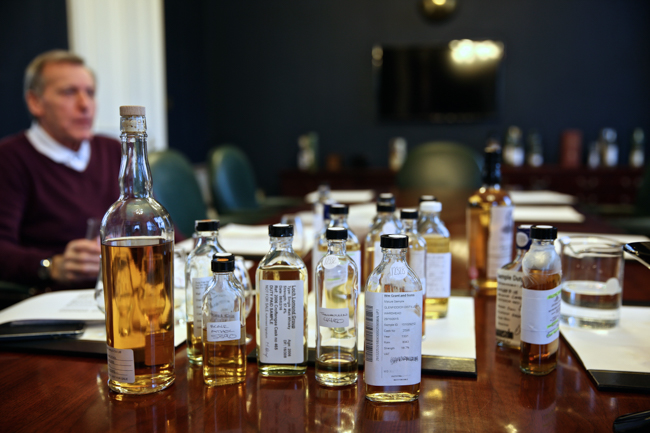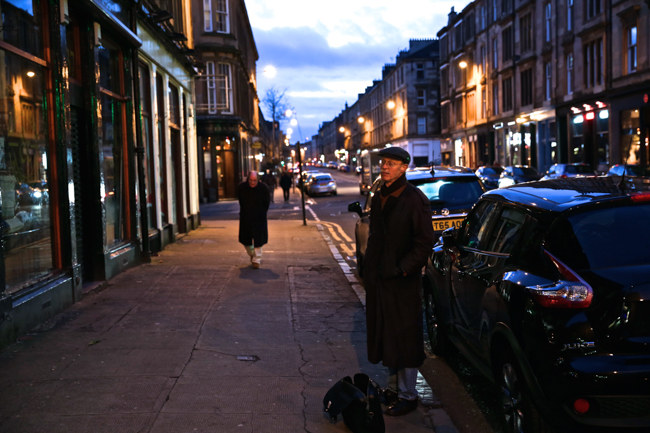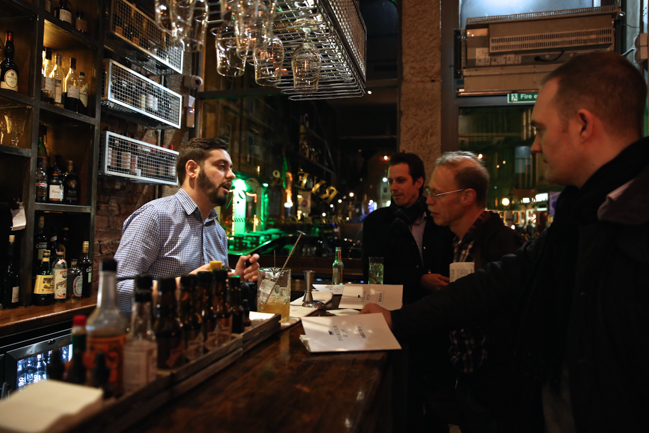Scotland 2016 - Day 1: Synchronicity

(Just to let you know before we get started, I'm doing two sets of blog posts this year: one each day here on the spirits site, as well as over at On the Trail. They'll be different in nature and will have separate photos, so you may want to check both from time to time.)
As Jeff and I sat on the plane last night, I said to him: "I'd like to find some alternatives to the standard heavy peat/heavy sherry formula that we seem to have fallen into. Rather than respond to the market, I'd like to start guiding it." I don't think I'm alone in my appreciation for nuance, subtlety, complexity, and delicacy when it comes to Scotch whisky. While I've enjoyed the last decade of fashionable trends as they pertain to single malt whisky, I don't know anyone out there who cut their teeth on bold, brash whiskies like Aberlour A'Bunadh or Octomore. Most of us started with old fashioned Scotch like Glenlivet 12 or Glenmorangie 10, then worked our way forward from there. Lately I've been feeling a little nostalgic for those early days of drinking, so I decided to make that a theme for this year's trip: getting back to basics. When we got to the offices of Hunter Laing late in the afternoon after landing in Glasgow, it was as if Andrew Laing had read my mind. There on the table were dozens of different samples, of various ages, all in precisely the style I had been looking for. "It's like you tapped into my unconscious!" I told him.

Joining us for the first time this year was Hunter Laing's master blender Tom Aitken who used to blend for Dewar's back when Bacardi first bought the brand. Tasting samples with a veteran who understands the inner workings and the history behind some of these lesser-known distilleries is invaluable. For example, when Jeff and I tasted the first cask—a 1998 Royal Brackla—we were completely taken aback. The whisky was a light straw color, but on the palate it was heavy, rich, mouth-coating, and supple. "I've never tasted a Royal Brackla sample like that before," I said to Tom, who responded by saying that Diageo used the distillery as a sort of experimental lab during that time. They made all sorts of different styles back then apparently and the quality could be wildly variant. The hits didn't stop there though. We moved through similar styles of whisky, each rather light and unassuming in appearance, but chock-full of character. A 1987 Bunnahabhain glided like silk over our tongues. A 1991 Glen Keith in second fill sherry showcased a perfect balance between fruit and vanilla. Other unpeated, unsherried selections from distilleries that can't be named (we'll fill you in later) were also spectacular. The peated selections we did find were classic in style; nothing young or experimental, just good, old fashioned Scotch. I think we found ten contenders to work with in about thirty minutes of tasting, including a few 30+ year old superstars for you saavy collectors.

After spending hours in the air and a few more in the car, Jeff and I were ready to hit the Glasgow streets. We caught a cab over to the Finnieston district and began slamming pints.

Andrew and the gang joined us at Porter & Rye for martinis and steak. I was asleep as soon as my head hit the pillow that night.
-David Driscoll
